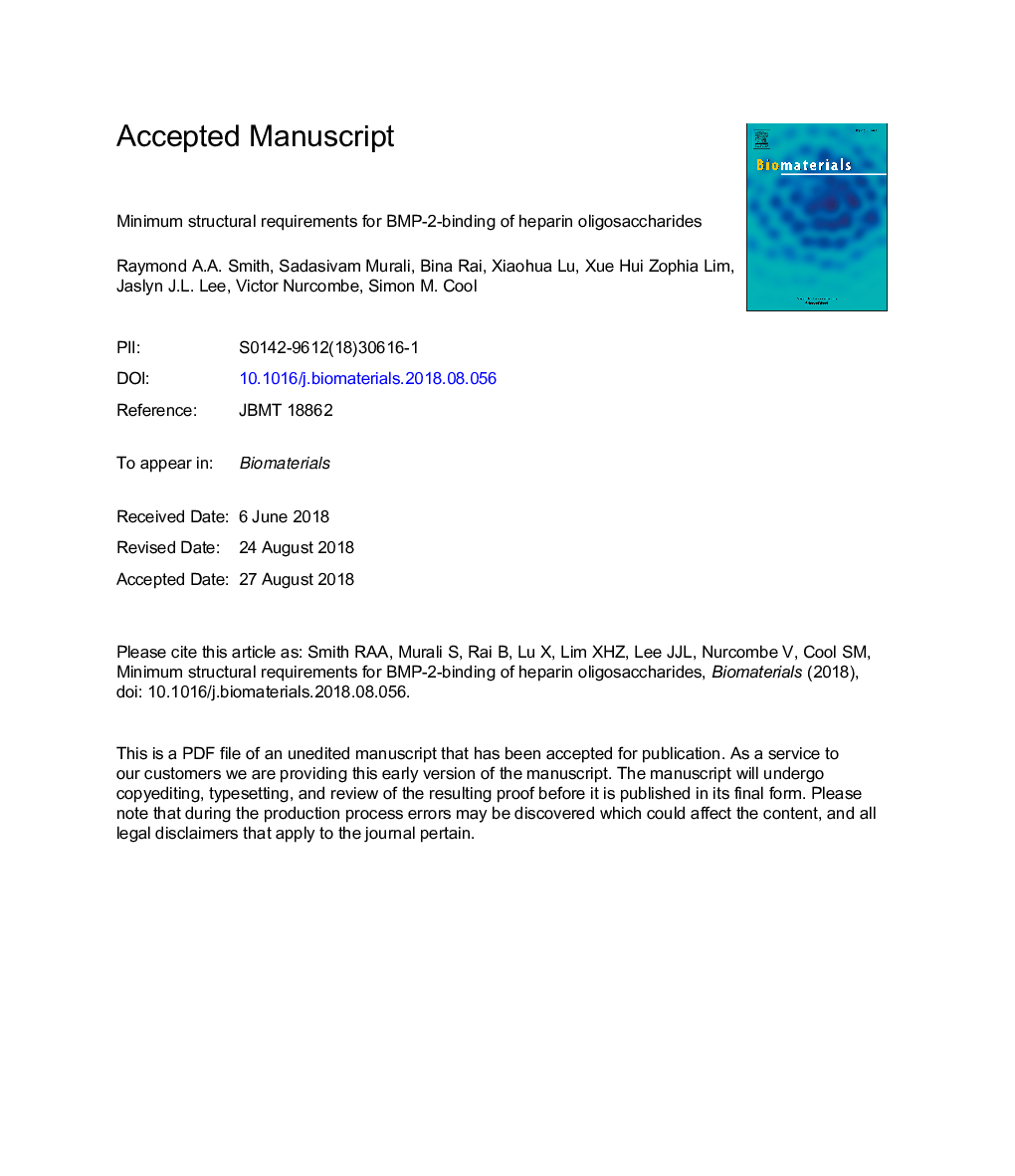| Article ID | Journal | Published Year | Pages | File Type |
|---|---|---|---|---|
| 10145070 | Biomaterials | 2018 | 30 Pages |
Abstract
Bone morphogenetic proteins (BMPs) are essential during tissue repair and remodeling after injury. Glycosaminoglycan (GAG) sugars are known to enhance BMP activity in vitro and in vivo; here the interactions of BMP-2 with various glycosaminoglycan classes were compared and shown to be selective for heparin over other comparable saccharides. The minimal chain lengths and specific sulfate moieties required for heparin-derived oligosaccharide binding to BMP-2, and the ability of such oligosaccharides to promote BMP-2-induced osteogenic differentiation in vitro were then determined. BMP-2 could bind to heparin hexasaccharides (dp6) and octasaccharides (dp8), but decasaccharides (dp10) were the minimum chain length required for both efficient binding of BMP-2 and consequent heparin-dependent cell responses. N-sulfation is the most important, and 6-O-sulfation moderately important for BMP-2 binding and activity, whereas 2-O-sulfation was much less critical. Bone formation assays in vivo further confirmed that dp10, N-sulfated heparin oligosaccharides were the minimal requirement for effective enhancement of BMP-2-induced bone formation. Such information is necessary for the rational design of the next generations of heparan-based devices for bone tissue repair.
Keywords
MSCTGF-βN-hydroxysuccinimideGAGsNHSDSFSABFGFBMP-2PCLALPAlkaline phosphataseTransforming growth factor βSPRSurface plasmon resonanceBone repairdegree of polymerizationMesenchymal stem cellKeratan sulfateDermatan sulfatefibroblast growth factorDifferential scanning fluorimetryBMPHeparan sulfateHeparinBone morphogenetic proteinPolycaprolactoneChondroitin sulfateGlycosaminoglycansGlycosaminoglycan
Related Topics
Physical Sciences and Engineering
Chemical Engineering
Bioengineering
Authors
Raymond A.A. Smith, Sadasivam Murali, Bina Rai, Xiaohua Lu, Zophia Xue Hui Lim, Jaslyn J.L. Lee, Victor Nurcombe, Simon M. Cool,
